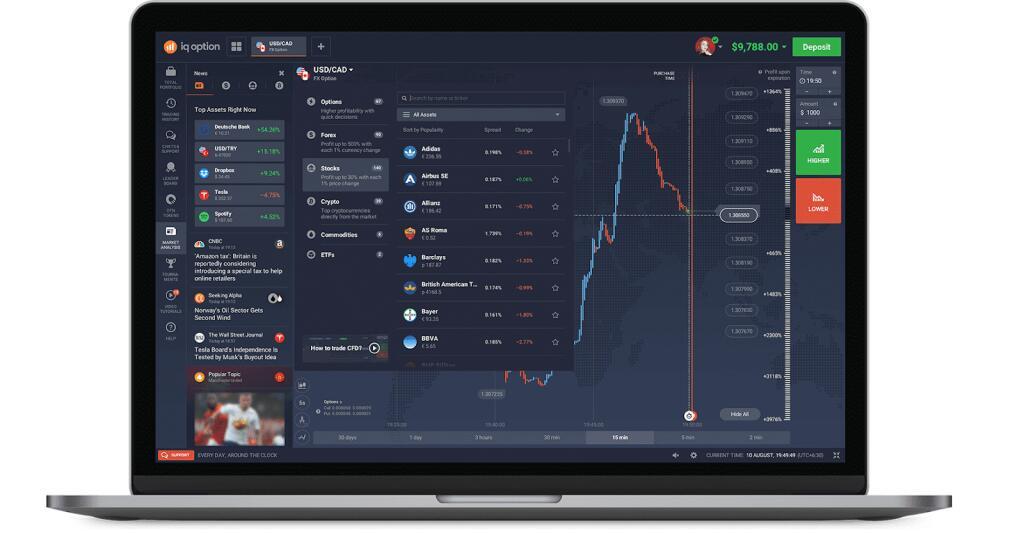Contents
Reversals in primary trends can be confused with secondary trends. It is difficult to determine whether an upswing in a bear market is a reversal or a short-lived rally followed by still lower lows. The Dow Theory advocates caution, insisting that a possible reversal be confirmed by comparing indexes. As market technicians I suspect you’ll be interested in the details and origin of my Capitulation Indicator. When I was a young broker at Dean Witter in the 1960’s they formed a department called COMPARE . When all three indices are simultaneously in double digits below those respective moving averages, we have Capitulation.
Hamilton considered the trading range neutral until a breakout occurred. In April, both the DJIA ($INDU) and DJTA ($TRAN) recorded new all-time highs . The primary trend was already bullish, but this confirmation validated the primary trend as bullish.
According to the theory, asset prices reflect the health of the economy and business circumstances. Therefore, by evaluating these variables and events, one may determine the trajectory of fundamental market movements in Forex and other forms of investment such as stocks and commodities. In October, the DJIA formed a higher low while the DJTA recorded a new low. After the higher low, the DJIA followed through with higher lows and highs, indicating an overall upward momentum. By early November, the DJTA had begun to confirm with the DJIA, and the primary trend had shifted from bearish to bullish.

Once the institutional investors absorb all the available stocks, short term traders since the support. During the Markup phase, the stock price rallies quickly and sharply. Because the rally is quick, the public at large is left out of the rally. New investors are mesmerized by the return, and everyone from the analysts to the public sees higher levels ahead. For a trend to be established, Dow postulated indices or market averages must confirm each other.
Dow theory in stocks
The ideas of Charles Dow, the first editor of the Wall Street Journal, form the basis of technical analysis today. Dow theory uses analysis of an index to work out the primary trend. It was developed with share investing in mind, nowadays OTC markets – like fx – play a bigger role in trading and the volumes for these are not readily available. This point stands the test of time – traders should not be looking at a few periods of data to inform their actions. Dow and Hamilton put daily fluctuations of the price down to randomness and of no real meaning.
- New all-time highs negate the need for pullbacks to confirm a new Buy.
- All of the knowledge, everything foreseeable, and anything that can affect supply and demand, including human fear and greed, are built into the price.
- In his StockCharts.com commentary on 25-Jun-99, Rex Takasugi discusses the correlation between volume and peaks in the market.
- After the low point of a downtrend in a bear market is established, a secondary uptrend bounce will occur.
- It is also relevant across all assets, including the relatively newer ones like cryptocurrencies.
As Hamilton put it, the market should become “dull and narrow” on corrections, with “narrow” meaning that the number of declining issues should not be expanding dramatically. The opposite is true in a primary bear market, where volume should increase on the declines and decrease during the reaction rallies. The reaction rallies should also be narrow, reflecting poor participation of the broader market. By analyzing the reaction rallies and corrections, it is possible to judge the underlying strength of the primary trend.
Three: primary trends remain in effect until a clear reversal occurs
A trader should only consider the trend to have changed if there is substantial evidence that it has reversed. Derivatives Essentials is a technical analysis structure introduced by Dow – the founder of Wall Street Journal and Dow Jones & Company. This theorist was part of the intellects that brought forth the Dow Jones Transportation Index and Dow Jones Industrial Average . The views expressed are as of the date indicated and may change based on market or other conditions.
The information ranges from specific company news, such as earnings reports and management changes, to macroeconomic factors like monetary policy and the global economy. Furthermore, future events, such as economic news releases, have also been factored into the current price. This is also the philosophy of technical analysis, and it conflicts with the principles of fundamental analysis and behavioural economics. The trend does not change from bearish to bullish until the previous reaction high has been surpassed. Many traders feel that this is simply too late and misses much of the move. Dow and Hamilton sought to catch the meat of the move and enter during the second leg.

Daily price movements are important, but only when grouped with other days to form a pattern for analysis. Hamilton did not disregard daily fluctuations, quite to the contrary. The study whats a pip in forex of daily price action can add valuable insight, but only when taken in the context of the larger picture. There is little structure in one, two or even three days’ worth of price action.
A bearish secondary trend does not change the fact that the market is in a primary uptrend. A bull market will start with an accumulation, then move to a public participation phases and finishes with an ‘excess’ phases. A bear market starts with a distribution Nonfarm Payrolls Forecast phases, then a public participation phases and then a panic phase. The goal of the theory is to identify the primary trend in the financial market backed by solid proof. Once a trend is recognized, it is considered to continue until a turnaround is evident.
What is the Dow Theory?
Trading activity is usually still high during this phase but is starting to decrease. One of the main techniques used to identify trend reversals in Dow Theory is peak-and-trough analysis. Apeakis defined as the highest price of a market movement in a period, while atroughis seen as the lowest price of a market movement in a period. Note that Dow Theory assumes that the market doesn’t move in a straight line but from highs to lows , with the overall moves of the market trending in a direction.

Once identified for the index, Dow’s rule was to only place trades in individual stocks in that direction. Technical analysis focuses on market action — specifically, volume and price. When considering which stocks to buy or sell, you should use the approach that you’re most comfortable with. Indeed, reversals in primary trends can easily be confused with the emergence of secondary trends. The adapt and overcome quotes therefore advocates caution, as it is difficult to distinguish between the two until after the event.
A trend is considered to be prevalent until the emergence of a clear reversal
Until his death in 1902, Dow was part-owner as well as editor of The Wall Street Journal. Although he never wrote a book on these theories, he did write several editorials that reflected his views on speculation and the role of the rail and industrial averages. If the primary trend is up, the volume should increase during market advances.
The Elliott Wave Theory (“EWT”) is named after Ralph Nelson Elliott and is a method of technical analysis based on crowd psychology. The final phase is characterized by thediscouraged sellingof buyers that held through the panic phase or bought during the recovery period. The discouraged selling is not as violent as in the panic phase. The final phase is characterized byphenomenal advancesas more and more of the public are drawn to the market. Thus, every known and foreseeable event is discounted, as is every condition that could affect the supply and demand of the individual stocks. Determine significant support and resistance levels with the help of pivot points.
Dow theory was conceived by Charles Dow in the late 19th century and later refined by William Hamilton. The theory seeks to explain how trends behave and is the basis of technical analysis. Dow Theory can be used in short-term trading as well as long-term investing. Learn about the 6 tenets, how they work and how they can be applied to day trading. The Dow theory is a relatively old and popular concepts in the financial market.
It is not, and therefore not even on my list of top five Dow Theory Tenets. There is a certain level of subjectivity and maturity involved with trend identification, and the methods can be unique to each investor’s personality, risk tolerance, and time horizon. The principle here to keep in mind is that the probability is always that the trend in place will continue, rather than reverse.
While the market declines, there is little belief that a bear market has started and most forecasters remain bullish. After a moderate decline, there is a reaction rally that retraces a portion of the decline. Hamilton noted that reaction rallies during bear markets were quite swift and sharp. As with his analysis of secondary moves in general, Hamilton noted that a large percentage of the losses would be recouped in a matter of days or perhaps weeks. This quick and sudden movement would invigorate the bulls to proclaim the bull market alive and well. However, the reaction high of the secondary move would form and be lower than the previous high.
For example, here is a secondary downtrend within the current primary uptrend in the S&P 500. Many traders go against this belief and trade stocks based on rumors and news. An example of a hype and news drive stock is Riot Blockchain , which was a biotech company that decided to venture into blockchain technology. Higher Highs and Lows on both averages confirms the resumption of the bull market. Dow said identifying the primary trend of the index was needed before placing trades in the individual shares. However if the price is rising but the big volume happens in the declines, then it shows the smart money are selling into the uptrend in expectation that it will reverse.
Technical analysis is an art form and the eye grows keener with practice. In July, trouble began to surface when the DJTA failed to confirm the new high set by the DJIA. Remember, the trend is assumed to be in force until proven otherwise. The airline business is cyclical and revenues are highly susceptible to economic changes.
With that said, Dow Theory, created by the father of technical analysis, may provide useful insight into this market. After the low point of a primary downtrend, a secondary uptrend bounce that exceeds 3% will occur and establish a temporary peak that holds above the previous lows. It is always the investors ‘in the know’ who are the market’s protagonists.